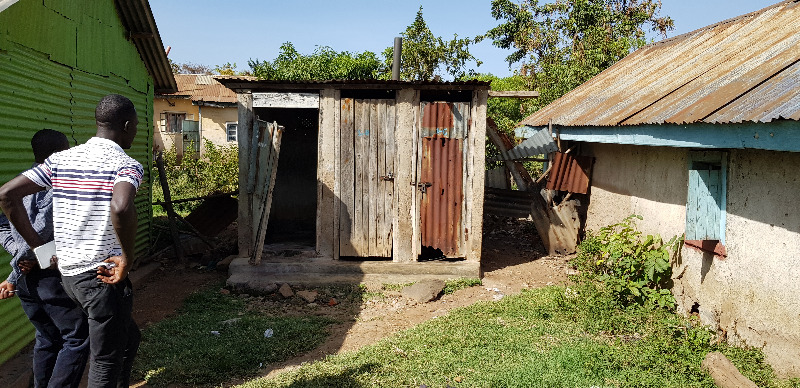- Forum
- categories
- Sanitation systems
- Shared toilets, community toilets, public toilets
- When are shared sanitation facilities acceptable? Evidence from Ghana, Kenya & Bangladesh.
When are shared sanitation facilities acceptable? Evidence from Ghana, Kenya & Bangladesh.
5246 views
- Elisabeth
-
- User is blocked
- Freelance consultant since 2012
Less- Posts: 3372
- Karma: 54
- Likes received: 932
Re: When are shared sanitation facilities acceptable? Evidence from Ghana, Kenya & Bangladesh.
I have copied below the key points from the publication:
Furthermore, I copied this list from the paper:Shared sanitation can be an adequate sanitation solution
provided that quality standards are met.
• Acceptable quality is needed to ensure user acceptance
to support the success of sanitation interventions and
improve public health.
• Establishing an enabling environment for adequate
sanitation service delivery can lead to more equitable
sanitation services for all.
• Quality standards for shared sanitation refer to facilities
that are:
– Equipped with flush/pour-flush toilet technology where
water is available;
– Used by up to three households per toilet;
– Closely located, accessible and available when needed;
– Providing adequate safety, security and privacy to
both genders;
– Clean and offering functional handwashing stations.
I have also moved this thread into our sub-category for "public, community and shared toilets" so that it's easier to find this, and similar threads, in future.In descending priority based on their score, the SSF (shared sanitation facility) quality priorities
from a user perspective are:
1. Water availability in close proximity
2. Cleanliness
3. A gender-separated toilet
4. Flush WC
5. Lighting
6. A lockable/functional door
7. Tiling
8. A handwashing station
9. Privacy
Regards,
Elisabeth
Freelance consultant on environmental and climate projects
Please Log in to join the conversation.
You need to login to reply- Chaiwe
-

- Moderator
- Innovation enthusiast and Knowledge Management Expert in WASH and Climate Change while cross-cutting Youth and Gender Issues. CEO of CaDev_Capacity Development (An African Social Enterprise)
Less- Posts: 336
- Karma: 8
- Likes received: 116
Re: When are shared sanitation facilities acceptable? Evidence from Ghana, Kenya & Bangladesh.
See here other similar discussions happening on these threads on the Forum:
Comparative risks of shared toilets with individual field defecation: forum.susana.org/71-behaviour-change-and...ual-field-defecation
Pause before pushing more people to ODF: forum.susana.org/71-behaviour-change-and...efecation-free#27712
The comments on both posts dive into shared facilities in a very elaborate manner.
Regards,
Chaiwe
Skat Foundation (With financial support by GIZ and SIRWASH up to November 2023)
Chaiwe Mushauko-Sanderse BSc. NRM, MPH
Independent consultant located in Lusaka, Zambia
Emails: This email address is being protected from spambots. You need JavaScript enabled to view it., This email address is being protected from spambots. You need JavaScript enabled to view it.
LinkedIn: www.linkedin.com/in/chaiwe-mushauko-sanderse-21709129/
Twitter: @ChaiweSanderse
Please Log in to join the conversation.
You need to login to reply- vascoschelbert
-
Less
- Posts: 1
- Likes received: 0
Re: When are shared sanitation facilities acceptable? Evidence from Ghana, Kenya & Bangladesh.
thanks for your questions. Please find my answers below!
Regarding "1. What the implications are for community level shared sanitation systems? Should 1:4 ratio relevant here even if it has dedicated maintenance team/Rota?"
In our QUISS study, we focused on (a) shared household toilets and (b) compound toilets. We explicitly excluded (c) community toilets and (d) public toilets. This is important to note as our findings most likely have limited applicability to community and public toilets, since the ownership, management, operation and payment patterns are different.
Concerning "2. Does this mean that new projects should embrace shared sanitation in their portfolio and adopt them accordingly ? What kind of contextual factors might we need for choosing shared sanitation ?"
First of all, it is important to note that users prefer private facilities not shared with others. I guess, we all do. Unfortunately, because infrastructure development is lagging behind and due to high population density coupled with high poverty levels in poor urban areas, shared sanitation is often the only viable option, at least in the short term. Therefore, the new WHO guidelines on sanitation and health, which serve as the normative guidance in the design of sanitation programmes, state that SSFs which ‘safely contain excreta can be promoted […] as an incremental step when individual household facilities are not feasible’. In a nutshell, shared sanitation should only be promoted if private solutions cannot be implemented.
Second, and in terms of contextual factors, users and their perspectives on sanitation priorities are fundamental to consider. It is so both in terms of trying to meet their needs with public investments and in terms of ensuring user acceptance and, thus, supporting intervention success. This includes an assessment of locally appropriate technologies, which inter alia depend on the physical contexts and hygiene practices. For example, low-income settlements in urban areas are completely different from rural contexts. Pit latrines with slabs are likely to pose a serious health hazard in dense urban areas while they can be considered a safe sanitation solution in a scattered village.
Therefore, contextualised standards for acceptable shared sanitation must be defined together with the local community. This, on the other hand, requires that national legal and regulative frameworks, guidelines and bylaws including institutional and financial arrangements are explicit on shared sanitation. Only then you can promote standards, monitor and evaluate progress and support enforcement. In addition, defining standards for acceptable shared sanitation together with the local community helps to highlighting existing gaps, and the setting of sanitation priorities.
Please Log in to join the conversation.
You need to login to replyRe: When are shared sanitation facilities acceptable? Evidence from Ghana, Kenya & Bangladesh.
1. What the implications are for community level shared sanitation systems? Should 1:4 ratio relevant here even if it has dedicated maintenance team/Rota?
2. Does this mean that new projects should embrace shared sanitation in their portfolio and adopt them accordingly ? What kind of contextual factors might we need for choosing shared sanitation ?
This topic has a lot to discuss and debate on !
Co-lead for SuSanA WG-6: Cities
Researcher, Eawag-Sandec
Email: This email address is being protected from spambots. You need JavaScript enabled to view it.
Twitter: @abishek_water
Please Log in to join the conversation.
You need to login to replyWhen are shared sanitation facilities acceptable? Evidence from Ghana, Kenya & Bangladesh.
Shared sanitation has immensely contributed to sanitation access in urban areas, but is at best considered a “limited” solution within Sustainable Development Goal #6. The reason is, that it is extremely difficult – for global monitoring purposes – to differentiate between shared toilets that are hygienic, accessible and safe, and the more common ones, which are poorly designed and managed.
To address this shortcoming, Eawag-Sandec’s QUISS project has identified the key criteria of what constitutes “acceptable quality” shared toilets in urban low-income contexts.
This policy brief introduces the main findings and provides recommendations for strengthening the acceptability, functionality and sustainability of shared sanitation facilities. In the light of these findings, we suggest that the JMP sanitation service levels be reviewed to increase the informative and explanatory power of quality assessment for shared sanitation.
Please find more information, findings and publications including country specific policy briefs on our project webpage: www.sandec.ch/quiss . You find there also a contact for direct questions to my colleagues.
QUISS staff on a site visit to inspect shared sanitation facilities in the low-income area of Manyatta, located in the city of Kisumu, Kenya (Image: Sandec).
Please log in or register to see it.
Developing methods and tools to support strategic planning for sustainable sanitation. Particular interested in novel technologies contributing to more inclusive and circular sanitation. This email address is being protected from spambots. You need JavaScript enabled to view it.
Attachments:
Please Log in to join the conversation.
You need to login to reply- Forum
- categories
- Sanitation systems
- Shared toilets, community toilets, public toilets
- When are shared sanitation facilities acceptable? Evidence from Ghana, Kenya & Bangladesh.








